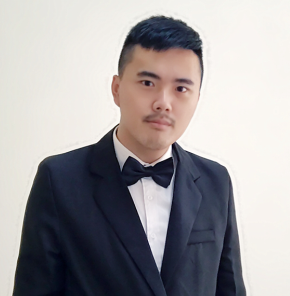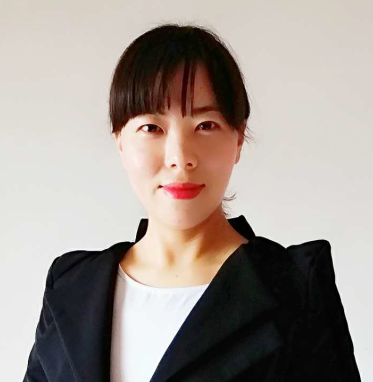2015年4月18日托福阅读预测(新航道版20150418)
2015年04月17日 03:15
供稿单位:互联网 责编:新航道小编 浏览 0次
供稿单位:互联网 责编:新航道小编 浏览 0次
2015年4月18日托福阅读预测
一、Japan建筑的change
篇讲的日本建筑风格的改变, 段概述,大概就是讲日本建筑风格改变和政体及农业改变是相关的。
第二段,介绍日本的旧建筑风格是使用很多容易腐蚀的材料,日本人喜欢拆了盖,盖了拆,move and replace,但是也算不上浪费,因为房子需要修葺,坏了的组件拿去扔掉,烧掉, 好的组件继续用。
第三段,就是说日本政治结合比较多,所以一大家子人住在palace里,这里有题,是缩写题。
第四段,随着日本发展,他们需要稳定居所,然后发现china什么的有个首都, 有房子可以随便住,这个好,他们也要这么干. 后来继承中国的方式,就有了主要宫殿和平常休闲的summer palace。
二、太阳系的起源
大部分科学家认为太阳系是由large nebulous形成的,nebulous大部分是由氢氦组成,还有一些较重元素。可能由于5亿年钱的supernova产生shock wave,nebulius形成了温度极高的pre-sun,之后其他星球渐渐形成。inner planets讨论了一段(不记得具体的了)outer planets由于离太阳比较远,温度比较低,有较多ice
三、由于geological process形成的岛屿例如volcanic island上的物种是由于风、鸟等传播带来的,跟板块形成的岛屿上的物种多样性不一样。由于4 facts导致的。前三个在一段讲的,重点讲了第四个,是因为wind影响了rain从而导致不同。最后一段说了两个特点,考了一个鸟等动物数量说是因为没有predator,还有哺乳动物考了一个细节题。
四、Although we now tend to refer to the various crafts according to the materials used to construct them—clay, glass, wood, fiber, and metal—it was once common to think of crafts in terms of function, which led to their being known as the "applied arts." Approaching crafts from the point of view of function, we can divide them into simple categories: containers, shelters and supports. There is no way around the fact that containers, shelters, and supports must be functional. The applied arts are thus bound by the laws of physics, which pertain to both the materials used in their making and the substances and things to be contained, supported, and sheltered. These laws are universal in their application, regardless of cultural beliefs, geography, or climate. If a pot has no bottom or has large openings in its sides, it could hardly be considered a container in any traditional sense. Since the laws of physics, not some arbitrary decision, have determined the general form of applied-art objects, they follow basic patterns, so much so that functional forms can vary only within certain limits. Buildings without roofs, for example, are unusual because they depart from the norm. However, not all functional objects are exactly alike; that is why we recognize a Shang Dynasty vase as being different from an Inca vase. What varies is not the basic form but the incidental details that do not obstruct the object's primary function.
1. The word “they” in the passage refers to ( 1)
○applied-art objects
○the laws of physics
○containers
○the sides of pots
2. Which of the following best expresses the essential information in the highlighted sentence? Incorrect answer choices change the meaning in important ways or leave out essential information. (1)
○Functional applied-art objects cannot vary much from the basic patterns determined by the laws of physics.
○The function of applied-art objects is determined by basic patterns in the laws of physics.
○Since functional applied-art objects vary only within certain limits, arbitrary decisions cannot have determined their general form.
○The general form of applied-art objects is limited by some arbitrary decision that is not determined by the laws of physics.
五、Sensitivity to physical laws is thus an important consideration for the maker of applied-art objects. It is often taken for granted that this is also true for the maker of fine-art objects. This assumption misses a significant difference between the two disciplines. Fine-art objects are not constrained by the laws of physics in the same way that applied-art objects are. Because their primary purpose is not functional, they are only limited in terms of the materials used to make them. Sculptures must, for example, be stable, which requires an understanding of the properties of mass, weight distribution, and stress. Paintings must have rigid stretchers so that the canvas will be taut, and the paint must not deteriorate, crack, or discolor. These are problems that must be overcome by the artist because they tend to intrude upon his or her conception of the work. For example, in the early Italian Renaissance, bronze statues of horses with a raised foreleg usually had a cannonball under that hoof. This was done because the cannonball was needed to support the weight of the leg. In other words, the demands of the laws of physics, not the sculptor's aesthetic intentions, placed the ball there. That this device was a necessary structural compromise is clear from the fact that the cannonball quickly disappeared when sculptors learned how to strengthen the internal structure of a statue with iron braces (iron being much stronger than bronze).
3. According to paragraph 2, sculptors in the Italian Renaissance stopped using cannonballs in bronze statues of horses because (2)
○they began using a material that made the statues weigh less
○they found a way to strengthen the statues internally
○the aesthetic tastes of the public had changed over time
○the cannonballs added too much weight to the statues
4. Why does the author discuss the bronze statues of horses created by artists in the early Italian Renaissance?(1)
○To provide an example of a problem related to the laws of physics that a fine artist must overcome
○To argue that fine artists are unconcerned with the laws of physics
○To contrast the relative sophistication of modern artists in solving problems related to the laws of physics
○To note an exceptional piece of art constructed without the aid of technology
六、The political institutions of the four countries posed no significant barriers to industrialization or economic growth. The nineteenth century passed relatively peacefully for these countries, with progressive democratization taking place in all of them. They were reasonably well governed, without notable corruption or grandiose state projects, although in all of them the government gave some aid to railways, and in Sweden the state built the main lines. As small countries dependent on foreign markets, they followed a liberal trade policy in the main, though a protectionist movement developed in Sweden. In Denmark and Sweden agricultural reforms took place gradually from the late eighteenth century through the first half of the nineteenth, resulting in a new class of peasant landowners with a definite market orientation.
7. According to paragraph 5, each of the following contributed positively to the industrialization of the Netherlands and Scandinavia EXCEPT (2)
○ generally liberal trade policies
○ huge projects undertaken by the state
○ relatively uncorrupt governments
○ relatively little social or political disruption
8.The word “progressive” in the passage is closest in meaning to (3)
○ rapid
○ partial
○ increasing
○ individual
9. The author includes the information that “a protectionist movement developed in Sweden” in order to (1)
○ support the claim that the political institutions of the four countries posed no significant barriers to industrialization or economic growth
○ identify an exception to the general trend favoring liberal trade policy
○ explain why Sweden industrialized less quickly than the other Scandinavian countries and Netherlands
○ provide evidence that agricultural reforms take place more quickly in countries that have a liberal trade policy than in those that do not
【推荐阅读】
免费资料领取
成都新航道课程咨询,欢迎拨打免费热线:400-998-6000
成都新航道英语培训学校开设:成都雅思培训、成都托福培训、成都sat培训、英语口语培训、个性化1对5,1对1学习、剑桥青少英语、剑桥商务英语.
更多雅思资料请扫描二维码





















